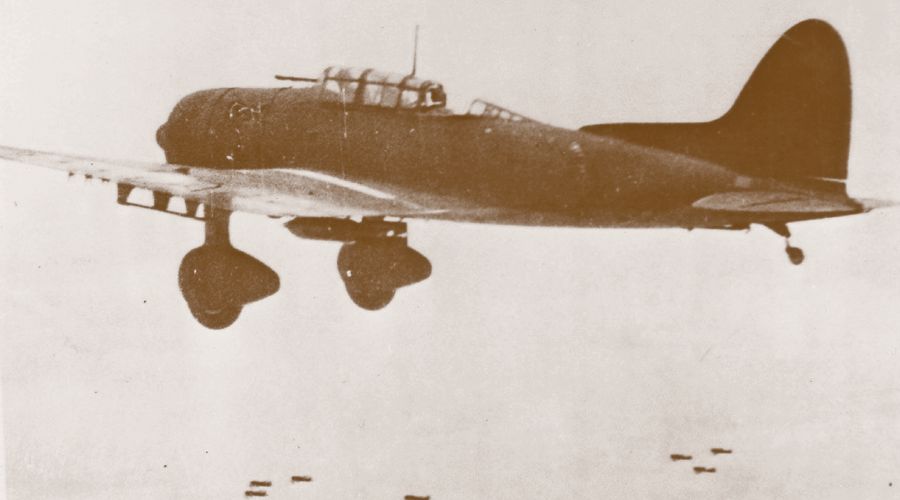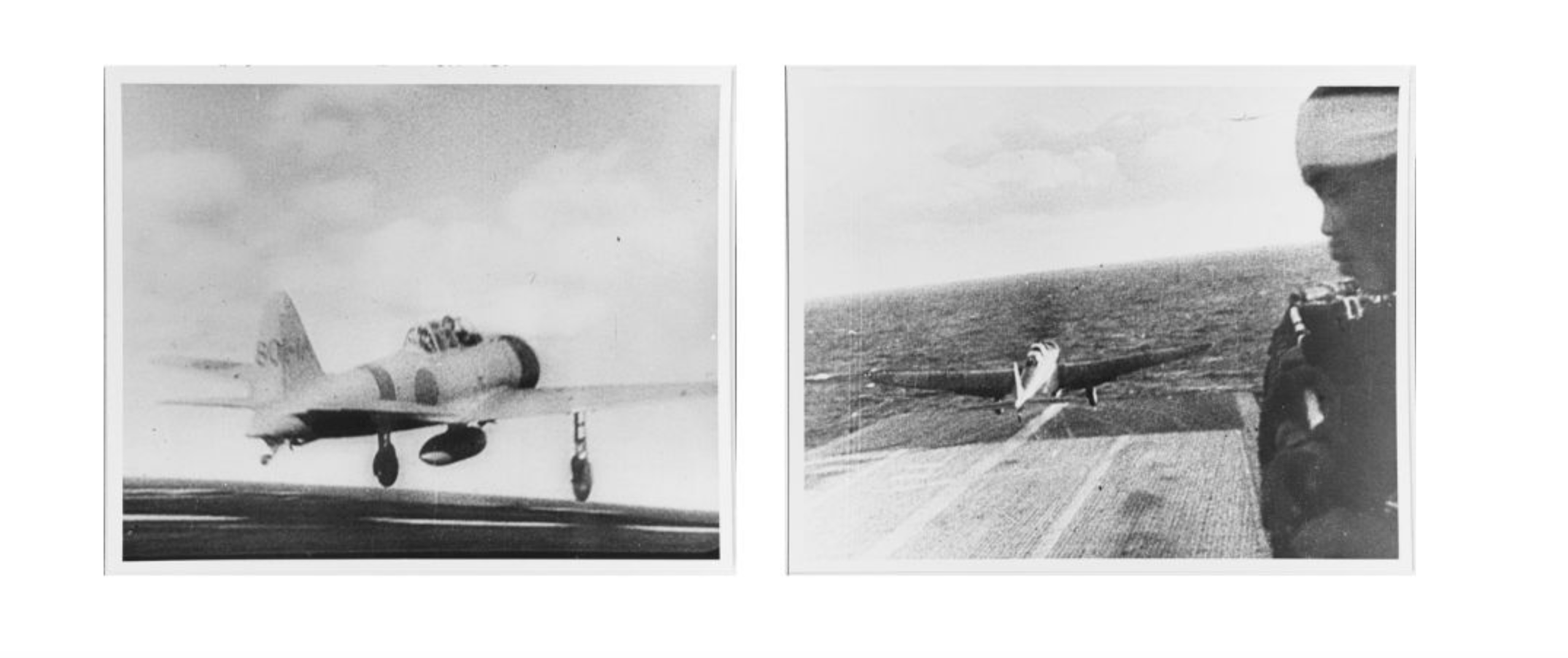The Pearl Harbor Aviation Museum recently took delivery of an ultra-rare Aichi D3A Type 99 carrier-borne dive bomber, better known to many by its Allied code name, ‘Val’. The fragile, incomplete fuselage of this once fearsome weapon now joins representative examples of two other Imperial Japanese Navy aircraft types which formed the bulk of the Japanese aerial force that attacked Pearl Harbor and other targets around Hawaii on December 7th, 1941. The museum will soon become the only such facility in the world where visitors can see a Mitsubishi A6M ‘Zeke’, Nakajima B5N ‘Kate’ alongside a ‘Val’. We reported on the Kate’s arrival back in April, 2016. It has since undergone conservation and is now on display in the museum’s main display hangar; the Val will now undergo a similar process.
As one can tell from the images presented here, the ‘Val’ has clearly suffered much abuse over the decades, bearing scars from its wartime experiences, not to mention vandalism and prolonged exposure to the elements. The museum has not released any details yet regarding the airframe’s identity or its wartime history – nor even when and from where it was recovered. However, it seems distinctly possible that this fuselage was amongst a haul of Imperial Japanese Navy aircraft wrecks recovered from Balalae in the Solomon Islands of the South Pacific a few years ago. There are extensive photographs of these airframes in an article we published in December, 2018.
The Pearl Harbor Aviation Museum did release the following details, however…
After a long-awaited arrival, the Museum’s newest acquisition, a rare WWII Val Dive Bomber aircraft, has arrived here on Ford Island, completing its 3-month long journey to the Pearl Harbor Aviation Museum. This September, our dedicated restoration team worked to safely unload the Val from a Matson shipping container into its new home, Historic Hangar 79.
Surviving WWII-era, Japanese, Aichi D3A dive bombers are few and very hard to find these days. Of the 1,495 D3As built across five variants, only a handful have survived destruction in combat or the inevitable ravages of time and nature. For these reasons, and the significant historical value in seizing an opportunity to acquire and assemble a visually recognizable, Pacific Theatre era Val, Pearl Harbor Aviation Museum is extremely pleased to announce our latest acquisition and restoration project. The aircraft will be assembled from the recovered sections of at least two, and perhaps more, Vals abandoned in shrapnel-riddled revetments beside a heavily bombed airstrip. Stay tuned for our future reports on the in-depth details about this Val’s specific series of design, manufacture, powerplant, and much more…
The infamous Zero, a single-seat fighter, flew Combat Air Patrol protecting their bombers and strafing ground targets. The dual-purpose Kate, a three-man crew, delivered either a single torpedo or a single, high-altitude, armor-piercing bomb. Both aircraft could carry lighter bombs on their wing racks.
The Val, with a two-man crew consisting of a pilot and a rear-facing gunner, was an extremely accurate dive-bomber. During the attack on Pearl Harbor, the Zeros were assigned a medium to high-level patrol mission, anticipating resistance from U.S. fighter aircraft. The Zeros also had protective escort responsibility of the bombers’ return to their carriers.
The Torpedo version of the Kate was to attack Battleship Row first, allowing for the slow-moving direct assault on the ships to occur as early in the attack as possible. The Vals were to attack a second target, the array of PBY aircraft on Ford Island to eliminate the possibility of these long-range search and report aircraft from discovering the withdrawing Japanese fleet. The Vals also targeted long-range bombers and all other aircraft and hangars for the same reason. The third attack mission consisted of Kates, with high-altitude, armor-piercing bombs, targeting the battleships on the interior, relatively protected, mooring for the double row of ships in Battleship Row.
Now that the Val is onsite, the real work begins, our restoration team will start to repair the Val to make it display ready and reunite the three aircraft together to share the stories of Pearl Harbor. Your continued support and generous donations help to preserve artifacts like the Val and ensure that we honor those who have defended our freedom so we might educate and inspire future generations.
Watch the video below to see the restoration team unloading the Val after its arrival at the museum.
If you have the means, please be sure to consider making a donation to the Pearl Harbor Aviation Museum so that they can continue their important mission to preserve our aviation heritage for future generations.



































